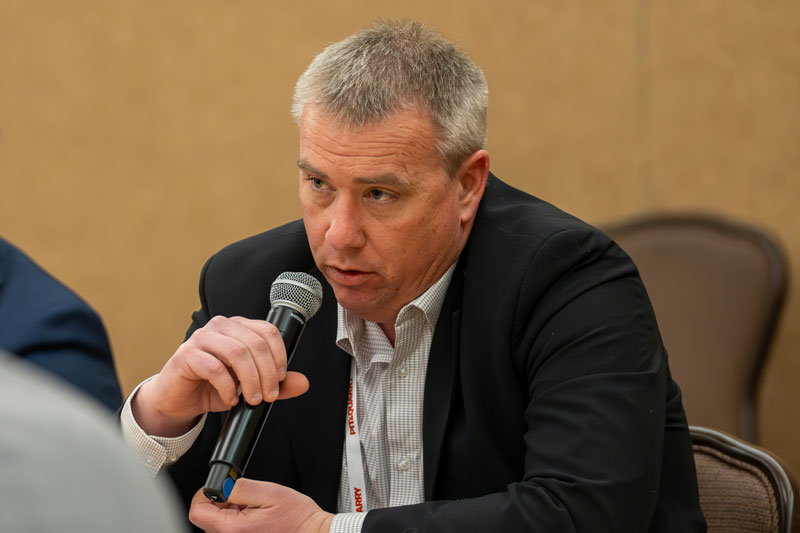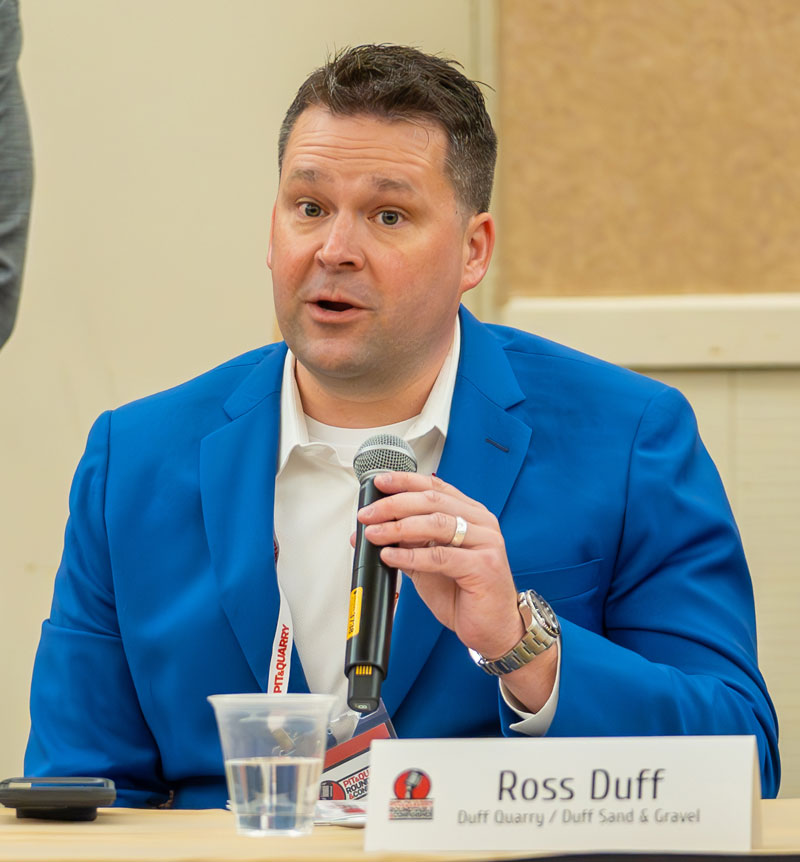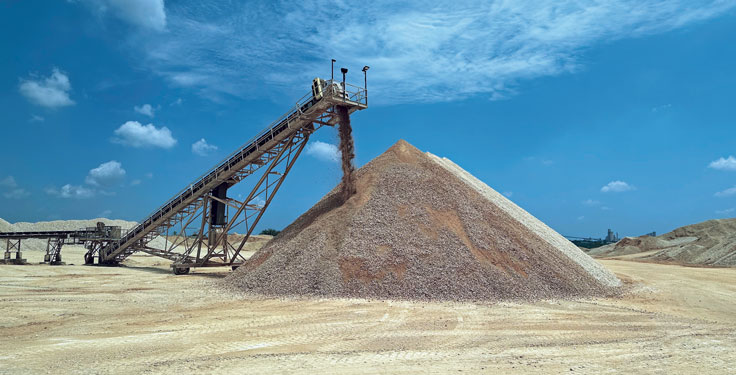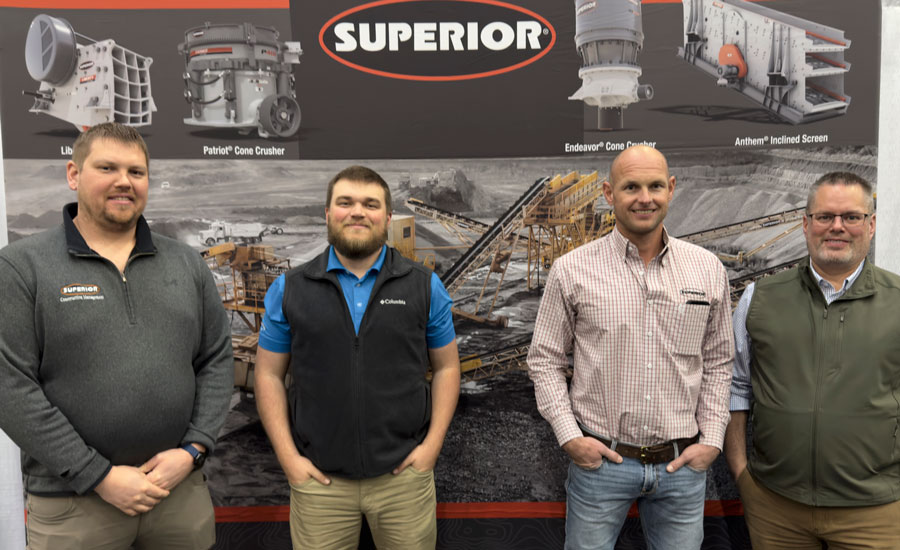The following transcript was edited for brevity and clarity from one of two concurrent Jan. 31 discussions at the 2025 Pit & Quarry Roundtable & Conference at The Wigwam Resort. Part 1 can be found
JACK KOPANSKI (PIT & QUARRY): For everyone: How might tariffs impact the aggregate industry?
For those here who are National Stone, Sand & Gravel Association (NSSGA) members, how would you characterize the value the association provided during former president and CEO Michael Johnson’s 11 years at the helm? How would you describe the association’s standing in Washington today and the influence it has in the nation’s capital? What direction would you like to see NSSGA take under its next chief executive?
For producers: What has your experience been like of late establishing new operations or expanding existing ones? Do you anticipate M&A activity to remain the top pathway to achieve growth in the coming years? How might additional industry consolidation affect the dynamic within some markets? And are your aggregate reserves getting farther away from core demand areas? Are you exploring alternative means of transportation to reach these markets?
JONATHAN HART (WASHINGTON ROCK QUARRIES): As we look at 2025 and what’s coming, we’re cautiously optimistic. Revenue is on the increase, profits are on the increase and we have good price floors. At the same time, when we look at things such as the labor market, the new administration and how all that comes together, there are a lot more questions than answers as far as what’s going to happen in the future. We know a lot of things are coming, but we don’t know what shape they will take.
While we might see a decrease slightly in the labor market, we’re going to see some of that offset by the technology that comes forward.
As far as the government is concerned, we’ll probably see a lot more tariffs come through. That’s going to put pressure on equipment prices and how we treat our reserves.
We will see more of our mine sites get farther away from the areas they serve. But again, some of that might be offset by technology or transportation through rail, barge and other means.
CLAY ALBRIGHT (CALDWELL STONE CO.): I’ll talk about NSSGA. I love the association. It’s been great for networking personally and professionally. We’ve got some great staff there. We have Michelle Stanley, who is interim CEO, and she’s been recognized as a great lobbyist in Washington.
We’ve got some people who left the staff and went to producer members or elsewhere, and that’s great. Good for them.
Overall, NSSGA has been pretty effective to the extent that we can be effective.
ROSS DUFF (DUFF QUARRY): I’ll touch on infrastructure. We just recently had a changing of the guard in Washington at the federal level. In Ohio, where we’re at, we’re getting ready to have a changing of the guard at governor next year.
The best thing we could do as producers came from a rather candid conversation I had with an Ohio congressman, who said: ‘When we are elected, we’re expected to be masters and be knowledgeable of all the industries – and that’s virtually impossible. The best thing you could do, as a manufacturer or producer, is to engage your state association and reach out to your elected officials. Invite them to your business. Show them what you do.’

BRIAN VRABLIC (RULMECA CORP.): With respect to NSSGA, a lot of us are members here, and we all know the great work NSSGA does. We all know the staff is great. At the end of the day, it is a member-driven organization, and they have subcommittees that are addressing every one of the questions you’ve just asked.
There is a labor development subcommittee that is working on content to bring to high schools and elementary schools. They’re actively asking for volunteers to bring elementary school kids and middle-school kids onto sites so they can show them the industry. But that doesn’t happen without the producers or the M&S (Manufacturer & Services Division) members themselves.
So, my encouragement is to go to St. Louis for AGG1 and the NSSGA Annual Convention. Go to meetings. Go to the LPF (NSSGA Legislative & Policy Forum). Because that’s good.
Get involved at the subcommittee level. Or, if you’re not involved at the subcommittee level, find somebody who is and say: ‘Hey, my quarry is open. My manufacturing site is open.’ Just open your doors. Get some tiny hard hats.
VINCENT ROCCO (AMCAST): I’ll stay on the same topic of NSSGA. I’m also part of the Young Leaders. I met Clay there when I first joined.
From the first time I went, I realized how important it was. They deserve a lot of attention and credit for bringing attention to our industry.
I had a chance to participate in the LPF two years ago. Being from New York, I realized a lot of the congresspeople were kind of detached from the aggregate industry at-large in the state. Now, I think it is different in other parts based on some of the people I’ve spoken to from other parts of the country, where those representatives are actually receptive and understand what’s going on and how important infrastructure is in their states. But for New York, it was very disconnected.
Like Brian said, it is important to invite those Congress members to your operation or to your quarry if you’re a producer. It’s important for them to understand exactly what goes on at the production level and on the M&S side.
CODY LADD (KRAEMER MINING & MATERIALS): I can comment a little bit about M&A for growth.
I’ve spent probably the last eight years of my career in aggregates in M&A, and it’s extremely difficult to get investors on board for greenfield. Investors are smart enough to ask the question: ‘What are the challenges with greenfield?’ As soon as you get about five minutes into that conversation, they’re tuned out. The worst part is if you keep them engaged that long, they then say: ‘What are the chances of success rate?’ When you say ‘10 percent,’ they’re really running away. That’s the challenge.
From an M&A pipeline standpoint, I’ve watched six or seven of my top 10 targets be bought by somebody else in the last couple of years. When you look at that, you go: ‘There must be no one left.’
If you want to understand how significant what I’m saying is, Vulcan did an investment day presentation in 2022 where they addressed this. They put a map up with dots on it of privately owned quarries. It is an overwhelming amount.
The reality is there are plenty of targets out there. Greenfielding is wildly challenging. Greenfielding is not going to have a lot of velocity for investments, as far as investors go. But M&A will work for growth, mostly because it’s innocent.
I think the other thing we must consider with M&A is that people who don’t technically integrate their businesses will most likely resell. I think we’re seeing a good bit of that right now, and I think we’ll continue to see a good bit more.












